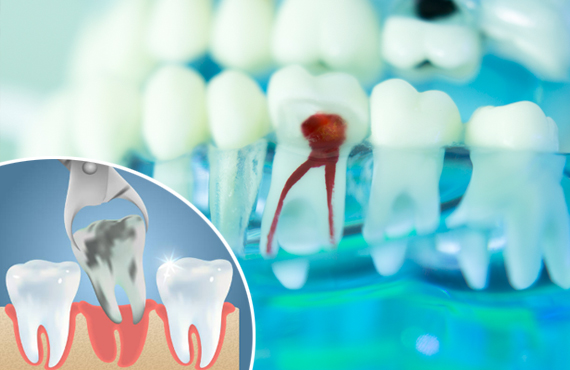
Have you been suffering from a deep cavity or infected tooth, and need to decide between a root canal or tooth extraction procedure? Then this article is for you (or, it can be should that time ever come).
Both root canals and tooth extractions are dental procedures that have been carefully and successfully performed by trained oral health professionals for many, many years. But sometimes, one procedure is not possible or advisable over the other due to the unique circumstances at hand.
So, let’s get into what exactly what sets these two procedures apart, including why a patient would want to opt for one over the other - so that if ever you’re in a position to choose, you’ll be able to make the most informed decision possible - and ultimately, make the choice that’s right for you and your smile.
A root canal treatment (RCT) or endodontic procedure is performed to essentially “save” the natural infected or damaged tooth from having to be extracted or pulled.
During a RCT procedure, the endodontist removes the infected pulp or innermost layer of the tooth, cleaning out the canals, and then filling them with a special material called “gutta percha”. In the final steps, the treated tooth is completed and sealed with an artificial dental crown or cap, restoring strength and support to the tooth.
Following the treatment, it is common for patients to experience minor discomfort - but this can easily be managed with the help of over-the-counter pain relievers.
On the other hand, a tooth extraction procedure is most often performed in cases where a tooth’s infection or damage is too extensive to treat, and saving the tooth is not feasible.
Alternatively, a patient may choose to extract the tooth even with the option to undergo a RCT, and may plan to restore the new toothless gap created with a dental implant in the future.
During a tooth extraction procedure, the dental practitioner will first apply a local anesthetic to assist in completely numbing the area and protect the patient from pain. He or she will then use special extraction instruments in order to carefully loosen the tooth and pull it out of its socket. The patient will feel some pressure and hear some interesting noises, but there should be no actual pain experienced.
It is normal for a patient to experience some light bleeding in the 24 hours following a tooth extraction, along with some facial swelling and bruising. Applying an ice pack for increments of 15-20 minutes at a time during the first one or two days of healing will help to keep these issues under control.
If a patient has the privilege of having the option to save their natural tooth with a root canal treatment, this will always be the advisable course of action - as no type of dental restoration will ever be superior to a natural tooth. Not to mention, root canal procedures are more affordable than a future dental implant, and, will require fewer visits and a shorter healing time.
If you’re given the option, it’s always wiser to save your natural tooth with a RCT vs. removing the tooth - but Dr. Farzad Danesh is here to help no matter what “root” you decide to go.
If you suspect that you are dealing with a troubled tooth in need of endodontic care, reach out to our experienced team at Endodontics on Don Mills today.